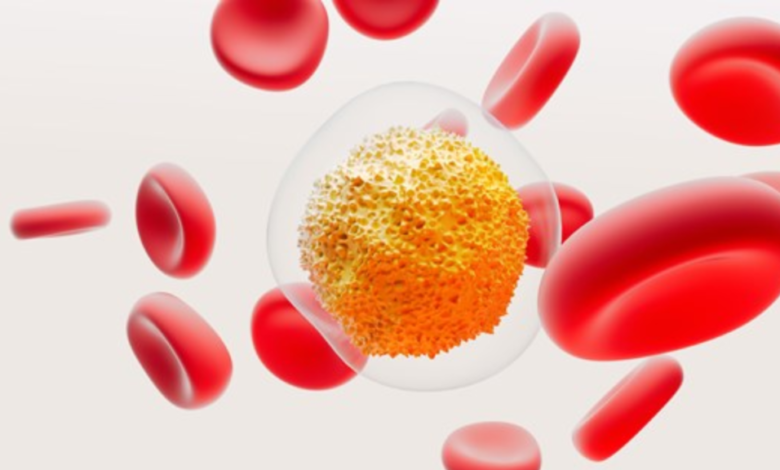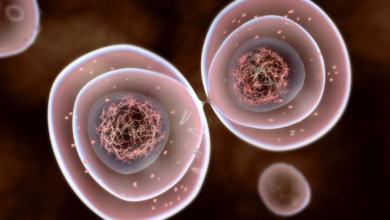Myeloma (Multiple Myeloma)
"Multiple Myeloma: Understanding the Disease and Treatment Options"

What is Myeloma (Multiple Myeloma)?
Multiple myeloma, often simply referred to as myeloma, is a type of cancer that affects plasma cells, a type of white blood cell that produces antibodies. In myeloma, abnormal plasma cells accumulate in the bone marrow, crowding out healthy cells and causing a variety of problems.
Types of Myeloma
While there aren’t distinct subtypes of myeloma, it can be classified based on the specific genetic abnormalities present in the cancer cells. However, these classifications are primarily used for research purposes and don’t significantly impact treatment decisions.
Symptoms of Myeloma
Symptoms of myeloma can vary widely and often develop gradually. Common symptoms include:
• Bone pain, especially in the back or ribs
• Fatigue
• Frequent infections
• Anemia
• Easy bleeding or bruising
• Kidney problems
• Weight loss
Causes of Myeloma
The exact cause of myeloma is unknown. However, certain factors may increase the risk, such as:
• Age: Myeloma is more common in older adults.
• Exposure to radiation or certain chemicals: Exposure to these substances can increase the risk of certain cancers.
• Genetic factors: Certain genetic mutations may increase the risk.
Who Can Suffer from Myeloma?
Myeloma primarily affects older adults.
Diagnostic Tests for Myeloma
To diagnose myeloma, a doctor may use a combination of tests, including:
• Blood tests: To check for abnormalities in the blood cells.
• Urine tests: To check for abnormal proteins in the urine.
• Bone marrow aspiration and biopsy: To examine bone marrow cells.
• Imaging tests: X-rays, CT scans, MRIs, and PET scans can help assess bone damage and detect other abnormalities.
Stages of Myeloma
Myeloma is typically staged based on the extent of the disease and the level of organ damage. The International Staging System (ISS) is commonly used to stage myeloma.
Treatment of Myeloma
The treatment for myeloma depends on the stage of the disease and the patient’s overall health. Common treatment options include:
• Chemotherapy: To kill cancer cells throughout the body.
• Immunotherapy: To boost the body’s immune system to fight cancer cells.
• Targeted therapy: To target specific molecules involved in cancer cell growth.
• Stem cell transplantation: To replace damaged bone marrow with healthy stem cells.
• Radiation therapy: To reduce pain from bone lesions.
Diet and Myeloma Prevention
While a healthy diet cannot directly prevent myeloma, it can support overall health and strengthen the immune system. Here are some general dietary recommendations:
• A balanced diet: A diet rich in fruits, vegetables, and whole grains can help.
• Limit processed foods and sugary drinks: These can contribute to weight gain and other health problems.
• Maintain a healthy weight: Obesity is linked to an increased risk of certain cancers.
Overall Survival Rate of Myeloma
The overall survival rate for myeloma has improved significantly in recent years due to advancements in treatment. However, it varies depending on the stage of the disease and the patient’s overall health. Early detection and timely treatment are crucial for a better prognosis.
Doctor to Consult
A hematologist-oncologist is the best doctor to consult for myeloma.
Diseases Associated with Myeloma
Myeloma is not directly associated with other specific cancers. However, certain genetic factors and environmental exposures may increase the risk of developing myeloma.
How to Prevent Myeloma
While there’s no guaranteed way to prevent myeloma, maintaining a healthy lifestyle can reduce the risk of certain factors that may contribute to the disease:
• Limit exposure to radiation and certain chemicals: Exposure to these substances can increase the risk of certain types of cancer.
• Maintain a healthy weight: Obesity is linked to an increased risk of certain cancers.
• Regular check-ups: Regular check-ups can help detect any abnormalities early on.
• Healthy lifestyle: A healthy lifestyle, including a balanced diet and regular exercise, can help boost the immune system.





